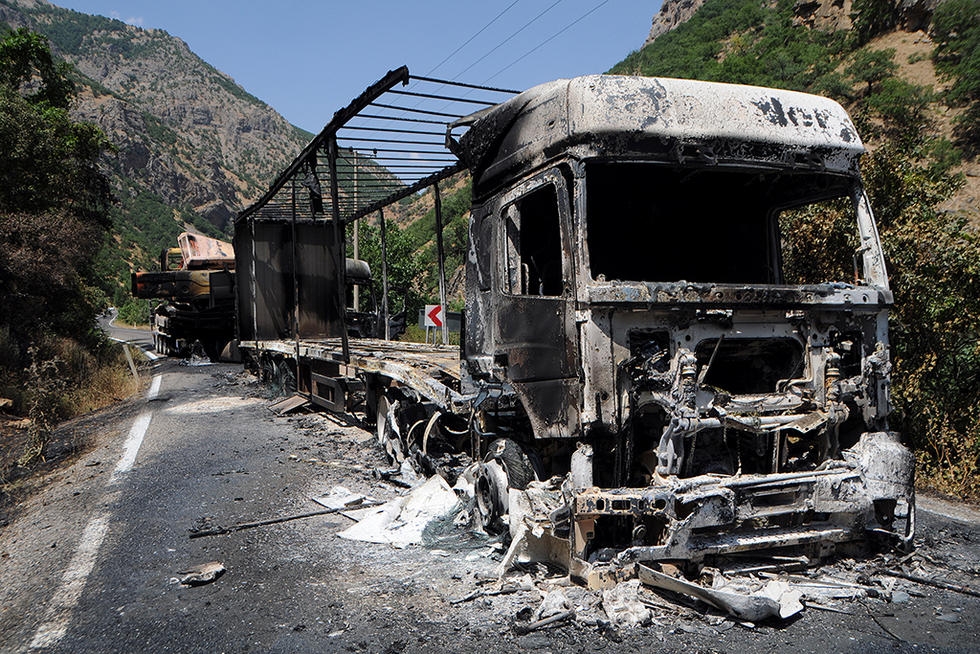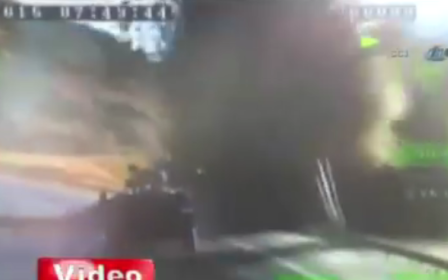Who caused the collapse of the Turkey-PKK ceasefire?

Most commentators would agree that the ceasefire between the Turkish state and the Kurdistan Workers Party (PKK) that had been established in 2013 is now thoroughly over.
Turkish jets continue to bomb PKK positions in the Qandil Mountains in northern Iraq, while on the ground in southeast Turkey - also known as Turkish Kurdistan - arrests and clashes have continued between the police and Kurdish activists.
Blame has been apportioned on both sides for the collapse of the ceasefire - supporters of the governing Justice and Development Party (AKP) have pointed the finger at the killing of two police officers by PKK militants in the city of Sanliurfa, while the PKK have held the Turkish state responsible for the bombing that killed 33 socialist activists in the border town of Suruc.
But the roots of the breakdown stretch back over a year.
Sporadic attacks between the PKK and the Turkish military had already occurred in 2014 following the crisis in Kobane. Turkish planes bombed PKK targets in October - the first major air operation since the beginning of the ceasefire - while PKK militants responded by killing three soldiers in the southeast.
Frederike Geerdink, a journalist based in the Kurdish-majority city of Diyarbakir, said that PKK concerns about a build-up in military apparatus had been a major factor in the breakdown in relations.
“The PKK has been very much bothered by the fact that the state has been going on with, ever since the ceasefire started, what they call ‘preparing for war’,” she told Middle East Eye.
“They have been expanding military posts in the southeast of Turkey, they have been expanding military infrastructure. Civilians have died in the southeast, including during the Gezi protests and the domestic security package that was adopted by parliament earlier this year was also not a step towards democratisation.”
On 12 July, the Koma Civaken Kurdistan (KCK) - the transnational body of which the PKK and YPG are part - declared “an end to the ceasefire” and warned that guerilla fighters would begin targeting dams in southeast Turkey.
"The Turkish state has used the ceasefire not for a democratic political solution but for preparing for a new war and strengthening its hand in this future war, by building dozens of military posts, roads and dams for the use of the military, and committing cultural genocide,” said the organisation in a statement.
“We have repeatedly warned the Turkish state to not build military posts, roads and dams for military use and stressed that these would mean the end of the ceasefire and the start of a war. Our people have stood as human shields in the face of such moves that would start this war and many of our people, including the youth, lost their lives in the attacks by the state."
Another major factor in the breakdown was the Dolmabahce Agreement controversy.
The Dolmabahce Agreement was a 10-point plan negotiated in February 2015 between the Turkish government and the HDP, with the aim of creating a longterm strategy for peace with the PKK.
Deputy Prime Minister Yalcın Akdogan, Minister of Interior Efkan Ala and three deputies of the pro-Kurdish People's Democracy Party (HDP), Sırrı Sureyya Onder, Idris Baluken and Pervin Buldan announced the roadmap in a joint-statement at Istanbul's Dolmabahce Palace.
In July, however, Erdogan claimed that the agreement was no longer valid, citing complicitness between the HDP and PKK.
“I do not recognize the phrase ‘Dolmabahce Agreement,’” he told reporters on 17 July.
“There is a government. So there is a political party with its grassroots [from the PKK]. If there is a step to take for the future of our country, this should be made in parliament. There cannot be an agreement with a political party that is being supported by a terrorist organisation.”
Nigar Goksel, Turkey and Cyprus analyst for the International Crisis Group, told Middle East Eye that a lack of trust between the two sides had hampered efforts for peace early on.
"The overarching issue was deep distrust in Ankara that once the Kurdish militants withdrew, the other side of the deal, the sort of issues that the Turkish state was expected to follow through, would fall through," she said.
"The rhetoric of the president also solidified that view, claiming that everything that needed to be done to meet the Kurdish demands had been done."
The operational structure of the PKK has caused confusion as well. Though the original organisation, known as the PKK, was set up in 1978 - along with the People's Defence Force (HPG) its armed with - since then numerous other institutions have been set up, working with the PKK with various levels of autonomy.
The KCK is the largest organisation, encompassing various bodies across the historical Kurdistan region, including the Democratic Union Party (PYD) in Syria and Party of Free Life of Kurdistan (PJAK) in Iran.
Ostensibly, decisions taken by the Executive Council of the KCK are binding and so a declaration by the body to end the ceasefire should be definitive.
But the attack in Sanliurfa that was cited as the PKK's breaking of the ceasefire was most likely carried out by a local cell of the PKK without orders from the central body - though after the attack, the KCK released a statement in support.
"The KCK approves of it because they say, '32 people died - should we not act on that?'" said Geerdink. "So local cells take their own initiatives, but its the KCK that decides the ceasefire is over."
The role of PKK leader Abdullah Ocalan has also been a major factor. Ocalan's status as the figurehead of the Kurdish movement has given him a lot of influence over the PKK's direction.
Since 2013, in all his public speeches, Ocalan repeatedly called for the PKK to lay down its arms. As late as February, he called for the PKK to make the "historic decision" to end the armed struggle.
But since April, Ocalan has made no speeches in public - in June, HDP Deputy Sirri Sureyya Onder said that "an unannounced isolation" of Ocalan had begun and that he was not being allowed visitors or any platform for talking.
In response, the KCK announced that any decision to disarm would henceforth be taken by it, rather than the HDP or Ocalan as he was “unable to make such a call in his current conditions” though it added, however, that it was “not disregarding leader [Ocalan] or HDP, but on the contrary supporting the different roles of political actors in Kurdish politics."
New MEE newsletter: Jerusalem Dispatch
Sign up to get the latest insights and analysis on Israel-Palestine, alongside Turkey Unpacked and other MEE newsletters
Middle East Eye delivers independent and unrivalled coverage and analysis of the Middle East, North Africa and beyond. To learn more about republishing this content and the associated fees, please fill out this form. More about MEE can be found here.




